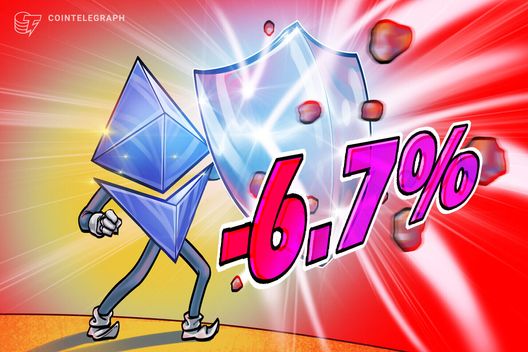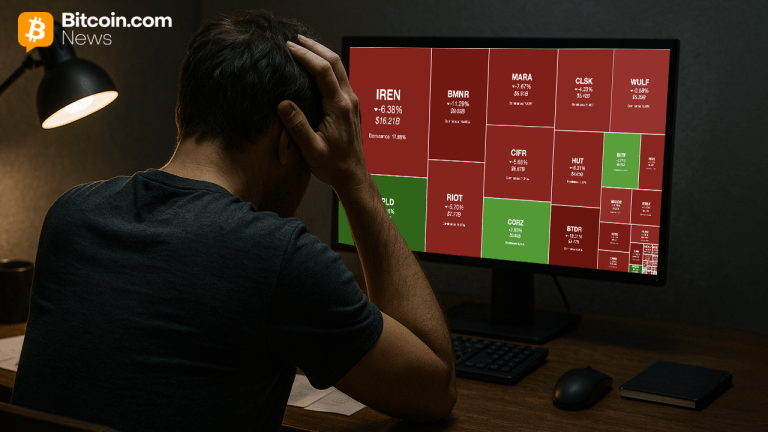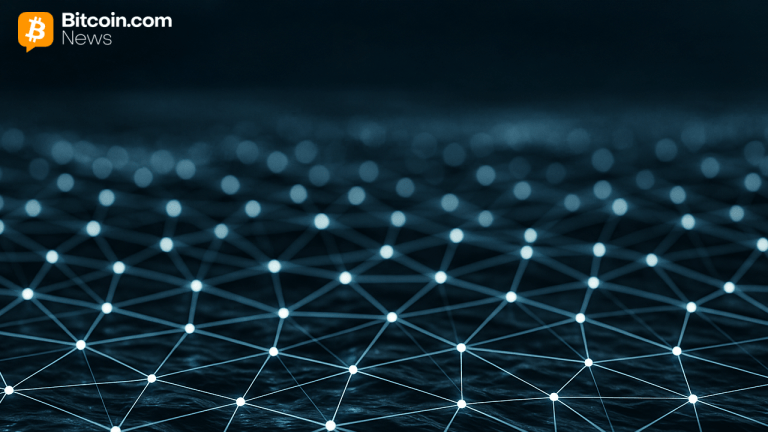Federal Reserve’s next move is unclear after bank failures
9 min read
Unlike recent Federal Open Market Committee meetings, where the market knew what to expect, this week’s could go one of several ways, analysts said.
“Economist and market projections of the likely path of the Fed funds rate are all over the map and appear to be shifting dramatically on a daily basis,” said Scott Anderson, chief economist at Bank of the West.
“The Fed is truly stuck between a rock and a hard place,” said Marvin Loh, senior global macro strategist at State Street, “with strong data still justifying a continuation of the tightening process, while the evolving banking and liquidity crisis calls for a more gingerly approach to the process.”
The Fed faces “tough choices,” said DWS U.S. Economist Christian Scherrmann.
Most economists now expect the Fed to raise rates by 25 basis points this week, while some see the FOMC holding rates where they are, a range of 4.50% to 4.75% after a 25pb point hike in January.
When faced with a choice between financial stability and inflation, Jan Szilagyi, CEO and co-founder of Toggle AI, said, the Fed “eventually always chose financial stability.” Plus, he noted, “Markets are betting that way too: cuts by year-end already being priced in.”
The ultimate decision will be based on how policymakers perceive financial conditions, said Gary Pzegeo, head of fixed income at CIBC Private Wealth U.S.
“Deposit flight, wide corporate credit spreads, and a general reluctance to lend all weigh on potential growth and lead the Fed to hold off,” he said. “It should be a close call.”
Tight labor markets, rising wages and inflation in core services will continue to make it difficult to get inflation down to the 2% level the Fed is targeting, he noted. And with the meeting this week, “they won’t be able to measure the impact of tight financial market conditions on growth or inflation with any precision,” Pzegeo said.
The decision will depend on the markets’ comfort “with the various rescue efforts at the time of the meeting,” he said. The committee meets Tuesday and Wednesday.
If markets are sanguine, Pzegeo said, “we would expect a 25-basis point hike.”
An argument can be made for a pause, said Steven L. Skancke, chief economic adviser at Keel Point and former White House and Treasury Department staff member, so the Fed can “see how the tightening from within the banking system — along with its own inflation fighting policy measures — impacts economic activity, jobs, wage growth and inflation.”
The downside, he said, is that a pause would “signal Fed concern about the stability of the banking system.”
Emergency loans to banks soared to $318 billion on March 15 from $15 billion just a week earlier, he said, which compares with a peak of $130 billion during the pandemic and $437.5 billion during the 2007-2008 financial crisis.
Ultimately, the decision will be based on “where regional bank stock prices seem to be trending,” Skancke said. “If it looks like the crisis concerns are resolved, the Fed will proceed to raise rates. If new troubles arise, or other banks are showing continuing distress, the Fed will pause and reassess both inflation and bank system health during the next six months.”
Banking concerns “may complicate” the move, according to the Wells Fargo Investment Institute, “but we do not think they will mean an immediate end to the tightening cycle. We still expect the Fed to raise rates by 25 basis points [this meeting] and likely another two times before a possible pause.”
While lingering concerns about the banking crisis may slow the pace of the hikes, Wells Fargo said, “we believe the Fed will not signal a peak in rates until inflation is much closer to its 2% target.”
Peter Ireland, an economics professor at Boston College and a member of the Shadow Open Market Committee, an independent organization that monitors and critiques the FOMC, sees a quarter-point rate hike coming, which he believes is the correct action. “Partly because the strong data call for it, but also to show that they can deal with the fallout from [Silicon Valley Bank] while still staying focused on bringing inflation back down.”
“The SVB [collapse] does serve as a vivid reminder that the Fed has already moved rates up a lot, and that tighter policy is having effects,” he noted. “The Committee should move more gradually now, while waiting for those effects to build with the usual lags.”
Federal Reserve Board Chairman Jerome Powell has been defiant in asserting the Fed will not stop raising rates “until inflation is on a sustainable path towards 2%,” said David Petrosinelli, senior trader at InspereX.
“It’s not,” he said. “The Committee would not repeat the mistakes of the Arthur Burns Federal Reserve of the 1970s, where rate hikes were paused while inflation was too high, which accelerated price gains and required heavier rate increases during the early 1980s to rein in.”
This week’s meeting “will test the committee’s resolve,” he said. The bond market sees roughly a 75% chance of a quarter-point hike, Petrosinelli noted.
Indeed, DWS’ Scherrmann noted, “inflation remains too high and labor markets too tight to declare victory over inflation.” Yet the “painful consequences of quick and sizable policy rate increases might just have surfaced.” While the banking collapses were “a direct consequence of the Fed’s actions,” he said they “can be taken as an example of painful side-effects that stem from the Fed doing what is needed to bring down inflation.”
Higher prices rather than higher rates, Scherrmann said, seem to be inflicting more pain on households.
“Headwinds of an ‘unwarranted easing of financial conditions’ might have turned into tailwinds,” he said. “The question that arises is, is the Fed comfortable with the speed of this tailwind or will it pause or even cut rates to release the pressure?”
Additionally, Scherrmann noted, a pause could hurt the Fed’s “credibility even further after letting inflation run hot. A pause or a cut might foster fears that inflation never will be tamed. Moreover, the first signal the Fed is sending most likely will be that they indeed see more risks to the financial system.”
Expect the Fed to “seek a middle ground by delivering a 25 basis points hike to address the inflation issue while further pointing to the effectiveness of their new lending facility to support potentially troubled banks,” he said. “If the Fed would see an immediate downside out of the current situation, they could have stepped in already anyway — like they did in March 2020, without waiting for a prescheduled FOMC meeting.”
Bank of the West’s Anderson pointed to recent economic data. “Based on the strength of the labor market and the stubbornness on consumer inflation, it’s hard to argue it is time for the Fed to take a pause.”
A pause following recent “hawkish rhetoric,” he said, “could do even more damage to the Fed’s credibility and deliver a message to the markets that Washington, D.C., regulators are panicked and maybe investors should be too. Not a good look.”
Expect the Fed to raise 25 basis points, Anderson said, “and repeat the mantra that they will remain data dependent and that nothing in the Summary of Economic Projections or the revised dot-plot … is set in stone.”
After this meeting, Bank of the West now expects one more quarter-point hike in May, “before an extended pause at a level of 5.00 to 5.25%.” But, the bank doesn’t see the Fed cutting rates this year “even as the risk of at least a mild recession has increased. Though with the banking crisis still on-going, the risks to the Fed rate outlook remain more heavily weighed to the downside.”
Again, it’s the credibility issue that will force the Fed to hike 25 basis point, according to State Street’s Loh. Forward guidance in the dot plot about the remainder of the hiking cycle “will likely be as important during the current bout of market fragility.”
While data suggest projections for future rate hikes should increase, Loh said, “we think there is a fair chance that the Fed stands pat, signaling just one more hike as implied by its December economic forecast. They will need to expertly craft their message as they will likely need to raise their inflation expectations, while also considering the continued strength in the jobs market relative to its unemployment expectations, as the eye of the needle gets smaller.”
The banking crisis, he said, could “lead to deflationary impulses, although those will take time to move through the economy. From this perspective, the Fed will need to use a scalpel in the tightening process rather than the sledgehammer that it has wielded over the past year.”
Gautam Khanna, head of U.S. Multi Sector Fixed Income at Insight Investment, still expects a terminal rate between 5% and 5.5%.
“We do not believe the turmoil related to Silicon Valley Bank and Signature Bank is a systemic event, but it will have the potential to drive market uncertainty for some time,” he said. “As such we believe a 25 bp hike at the next Fed meeting is still a likely outcome.”
It remains “unlikely,” Khanna said, the Fed will pivot to rate cuts this year. “Inflation is moving in the right direction but, with wage-sensitive ‘supercore’ inflation still running strong and the ongoing tightness in the labor market, we expect the Fed to remain committed to its mission to tame the inflation problem.”
The quarter-point hike is also expected by Morgan Stanley, which foresees the Fed’s post-meeting statement adding a reference that the panel will “closely” watch financial conditions “and that a ‘further increase’ in the policy may be appropriate.”
They also expect the Sumary of Economic Projections forecasts to stay “largely unchanged. While just two weeks ago the general sentiment among Fed officials indicated that estimates of the peak rate had moved up, financial developments over the last week will likely tilt the balance toward inertia.”
As for the terminal rate, Morgan Stanley expects one more hike to a peak of “5.1%, but this expectation is highly dependent on near-term developments. Inflation fighting will remain front and center for policymakers as long as the macro environment allows.”
Those expecting a pause include Kelly Bogdanova, vice president and portfolio analyst at RBC Wealth Management. “In our view, the fallout from all of this could force the Fed to pause its rate hike cycle and quantitative tightening sooner rather than later, despite the fact there are not yet clear signs of when inflation will decline to the central bank’s 2% target.”
Wells Fargo Securities Chief Economist Jay Bryson, Senior Economist Sarah House, and Economist Michael Pugliese also expect a pause, although “economic data have been solid, which in isolation argues for a 25 bps rate hike.”
If the stress from the banking crisis passes by the May meeting, they said, “we expect the FOMC will resume rate hikes in subsequent meetings.”
José Torres, senior economist at Interactive Brokers, said, “Inflation hawks who believe regulators have thwarted a widespread contagion of bank instability following the failures of SVB and Signature Bank maintain that the Fed needs to remain aggressive and hike the fed funds rate 50 bps.”
That’s based on Powell’s recent testimony before Congress in which he said the Fed would consider a faster pace of hikes if warranted. Still the market, he noted, expects a 25 bp hike.
Market volatility will determine whether the Fed pauses or hikes by 25 bps, said Ryan Swift, U.S. bond strategist at BCA Research. Whatever it does, he said, “while the Fed’s hiking cycle is close to its peak, we don’t anticipate rate cuts anytime soon.”
The pace of growth and disinflation will determine how much the Fed hikes the rest of this year, he said. “If we are correct that the economic drag from tighter bank lending standards will be drawn out and shallow, then the rate cuts that are currently priced into the U.S. yield curve will not materialize.”
Even if the Fed holds rates this week, Swift said, “its interest rate projections will continue to signal further rate hikes this year. Certainly, with core inflation so far above target and with the unemployment rate at 3.6%, there will be little support for rate cuts any time soon.”
Still, Keel Point’s Skancke noted, by “March 13, owing to the disinflationary impacts of the stress and tightening liquidity through the banking system as a result of the bank crises … Fed funds futures had already reversed course and were looking for only another 25 basis points in rate increases and then falling rates in the second half of 2023.”
Three days later, he said, Fed funds futures “were evenly split” between a 25 bp increase and a pause, with expectations for as much as 100 basis points of rate cuts by the end of the year.
“It is too soon to know the full impact of Fed and banking system tightening over the past year and past week on the economy, inflation and earnings,” Skancke said. “Lower interest rates in the second half of 2023 will have a positive impact in equity prices and fixed income investments.”







